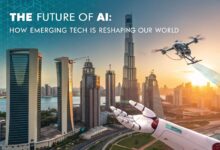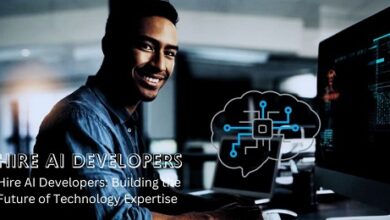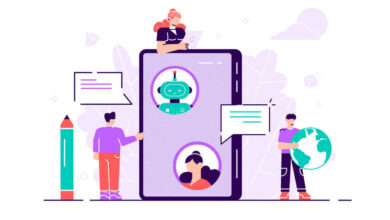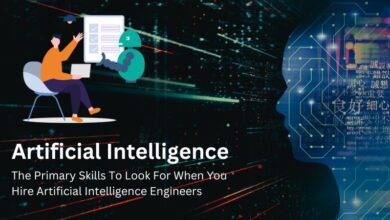Orchestrating Intelligence: Exploring AI/ML-Agents and Frameworks
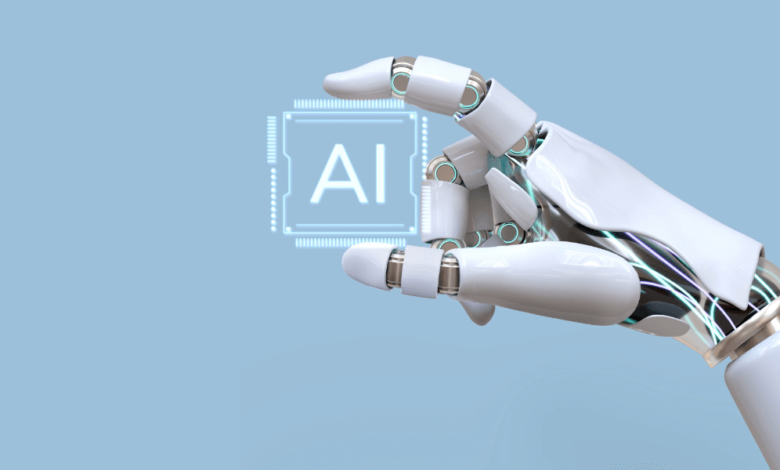
Introduction
“Great things in business are never done by one person. They’re done by a team of people.” – Steve Jobs.
In the age of AI, this quote couldn’t be more relevant—except today, teamwork isn’t just among humans but among AI agents too. Sure, AI has redefined businesses by automating processes and streamlining operations, but here’s something not everyone knows: the true magic happens when multiple AI systems work together.
However, as brilliant as these AI systems are, they aren’t foolproof. Mistakes happen, biases creep in, and without the right coordination, things can fall apart. That’s where Human-in-the-Loop (HITL) systems come into play, combining the efficiency of AI with the nuanced expertise of humans to keep everything on track. Let’s dig deeper into this area.
Why Do you Need an AI Agent?
24×7 Virtual Assistance: AI agents, especially chatbots and voice assistants, handle service inquiries and offer troubleshooting assistance around the clock. This provides uninterrupted support, improving overall customer satisfaction.
Proactive IT Management: Machine learning agents can monitor your IT systems and cloud environments for anomalies and security threats. They can also allocate additional resources when demand spikes (and vice versa, reallocate them to other tasks when demand slumps), optimizing expenditure without compromising on the AI agent’s performance.
Real-Time Process Automation: AI agents can automate various processes in various industries. For instance, in finance, they flag suspicious transactions and automate regulatory reporting to prevent fraud. At the same time, in healthcare, these systems can monitor patient data for early warning signs and trigger alerts to prevent emergencies.
Faster Software Development and Deployment: AI agents have helped several companies adopt a DevOps approach to software development and delivery. These systems automate routine tasks like code merging, version control, and environment management. They have also enabled easy integration of CI/CD pipelines to automate the monitoring of system health, resolve conflicts, and deploy software updates. This capability is a key offering of Apache Kafka Development Services India, ensuring seamless workflows and enhanced operational efficiency for businesses.
How AI Agents Work: Exploring Core Technologies and Frameworks
AI or ML agents are autonomous or semi-autonomous software systems that can sense their environments. Naturally, it takes a technical blend of many technologies & algorithms and a reliable physical infrastructure. Let’s take a closer look at the core components behind an AI or machine learning agent.
-
Large-Language Models (LLMs)
Aware of GPT? That’s a classic example of a conversational LLM. LLMs, such as GPT, Llama, and BERT, serve as the backbone for many conversational and task-based AI agents. They are trained on large datasets to develop natural language understanding (NLU), including text processing and response generation.
-
ML Models and Algorithms
Being a superset, AI relies on many ML models and algorithms, including:
- Supervised Learning for tasks like recommendation engines.
- Reinforcement Learning to teach agents through reward-based mechanisms much like how game-playing bots learn strategies by receiving positive feedback for successful moves).
- Unsupervised Learning for clustering and anomaly detection without labeled data.
-
Memory Management and State Retention Mechanisms
For a holistic user experience, AI agents must retain the context of a conversation or action. This memory is often stored in two main categories: short-term and long-term memory. AI agents must retain conversation or action context through short-term and long-term memory.
- Short-term memory exists only during the active session. It stores recent exchanges in temporary data structures like message lists to maintain context.
- Long-term memory spans multiple sessions. It relies on persistence mechanisms, such as databases or knowledge graphs, to store essential data points that can be retained and reused in future interactions.
-
API Integrations with TPPs (Third-Party Providers)
AI agents feed on real-time data and interactions, which they often access via secure APIs. Consider open banking, for example. Open Banking VAs or solutions use custom financial-grade APIs (FAPIs) to fetch data from external sources or banks, allowing customers to access services from multiple providers on a single platform.
-
Computer Vision and Image Recognition Technologies
Some AI agents, especially those specializing in visual tasks like facial recognition or object detection, rely on computer vision technologies. These models powered by CNNs (Convolutional Neural Networks) enable intelligent systems like self-driving cars or surveillance cameras to interpret visual inputs based on categories/classifications fed through training data.
-
Natural Language Understanding (NLU) and Natural Language Generation (NLG)
For machine learning agents that are used to understand and respond effectively, NLU helps extract meaning from user input, while NLG creates appropriate responses. These technologies are used in virtual assistants, like Alexa and Siri, to carry out seamless conversations.
-
Cloud Infrastructure and Edge Computing
AI agents typically operate on cloud environments (like Microsoft Azure, Google Cloud AI, and AWS) for scalable computing power. Cloud environments can automatically adjust resources to handle large datasets and user loads, perform complex computations, and manage high-traffic demands. Additionally, edge computing allows AI to process data closer to where it’s generated (such as IoT devices), reducing latency and enabling real-time decisions.
How to Build These Intelligent Systems?
Developing AI or machine learning agents is a time-consuming and technically challenging process. It requires a conscious approach from the very beginning—from selecting the right AI agent frameworks to deploying and monitoring the models effectively.
- Choosing the Right AI Agent Frameworks: Based on the use case, start by selecting a machine learning or artificial intelligence framework. Some commonly used AI agent frameworks include TensorFlow, PyTorch, LangChain, and Semantic Kernel.
- Custom Training AI Models and Agents: Consolidate historical data to train your AI/ML model. Extract relevant features (data points). Split your data into training, validation, and test sets to prevent overfitting. Use the final training set to train the model.
- AI Orchestration and System Integration: Use AI orchestration tools like LangGraph or AutoGen to manage multiple agents or models. These tools help with hassle-free task execution, such as planning and real-time data processing.
- Embed persistence mechanisms if you require long-term state retention.
- Test and Deploy: Once you have the AI or machine learning agent, thoroughly test the system to identify bottlenecks and other faulty behavior.
Seems like a hefty process, doesn’t it? It surely is an intricate process where each step requires precision and expertise. Every phase presents its challenges:
- Model training demands careful data preparation, feature selection, and parameter tuning to avoid errors like overfitting.
- Setting up AI orchestration tools can be complex and requires ongoing monitoring.
- Embedding memory management systems adds another difficulty, especially when models must adapt continuously over multiple interactions.
Given the endless scope of potential technical hurdles, it’s not surprising that many companies prefer to rely on professional AI/ML development services. These service providers have the necessary expertise and established infrastructure and workflows to build an AI or machine learning agent from scratch.
Orchestrating Multiple AI/Machine Learning Agents
Implementing an AI agent itself is a challenging task, especially if you’re building it on your own. Imagine working with more than one agent at a time. Coordinating various AI agents, known as AI orchestration, requires complex integrations, task management, and proactive monitoring. Here is all that goes behind orchestrating intelligence with multiple AI or machine learning agents.
- Multi-Agent Collaboration and Communication: AI agents communicate through predefined protocols to exchange data (information). Many companies use tools like Microsoft AutoGen to allow AI agents to pass on the context to other models.
- Delegating Tasks within the Framework: Using individual agents’ capabilities, tools like LangGraph or Apache Airflow can automate allocation. These machine learning frameworks ensure that each agent performs tasks aligned with its strengths, helping maintain efficiency across systems without manual intervention.
- Setting up API Gateways: For centralized data access, you’ll need to set up custom API gateways that channel data exchanges between AI agents. This will ensure real-time availability and prevent data silos.
- Configuring API Gateways: For centralized access points, streamline data exchange between AI agents and external services through custom API gateways. This ensures real-time data availability and seamless communication between agents, eliminating data silos and ensuring consistency.
- Error Handling and Conflict Resolution: If AI agents generate conflicting outputs, HITL (humans in the loop) approach allow humans to review and intervene (something we’ll explore in the coming few sections). Orchestrators can also prioritize outputs based on confidence scores or apply decision trees to resolve conflicts automatically.
Relying Only on AI Agents? Here’s What you Risk
AI/machine learning agents are only as good as the underlying implementation—LLM, prompts, RAG, etc. If this underlying framework is correctly in place and at par with quality benchmarks, then AI agents are exemplary in performing countless tasks.
However, even with slight discrepancies in the underlying technology or data, AI systems can miserably fail to perform. And unfortunately, there’s no guarantee of the former. This is why, relying solely on an AI agent exposes you to the following risks:
-
More Technical Debt
AI agents excel in generating code quickly but may overlook the hierarchical design of React components, resulting in duplicate or poorly organized components. Without intervention, this can add to your technical debt as, over the years, the app’s structure can become unmanageable, making future scaling and maintenance difficult.
-
Performance Bottlenecks
AI may struggle to manage stateful data properly in complex scenarios. Inefficient state management can lead to unnecessary re-renders, increasing load times and causing the app to feel sluggish. Without proper state flows, your apps may not be able to handle real-time updates as efficiently.
-
Sub-Par User Engagement
AI agent frameworks may not fully comply with accessibility guidelines like WCAG or ARIA, limiting usability for users with varying abilities. Additionally, AI tools may miss essential UX principles, such as intuitive navigation or clear visual hierarchy, which impacts user engagement and overall satisfaction.
-
Compromised Outliers/Edge Cases
When faced with rare or atypical interactions, AI systems can falter as they often work on specific patterns or routines. This incapability of handling outliers/edge cases can result in crashes, unexpected outputs, or errors.
-
Increased Security and Compatibility Risks
AI agents aim to improve development speed through intelligent automation This often leads to oversights in security protocols and privacy compliance, leaving applications vulnerable to data breaches and non-compliance with regulations like GDPR or CCPA. If ignored, these risks can result in legal penalties and harm your company’s reputation.
Human-in-the-Loop (HITL) Approach for Enhanced Oversight
The “human vs. AI” debate has shifted toward a new mindset: “AI won’t replace humans, but humans without AI will struggle to keep up.” This realization acknowledges that AI complements human expertise rather than competing with it, giving rise to synergistic systems called Human-in-the-Loop (HITL) systems. HITL combines the efficiency of AI with the intuition, empathy, and oversight of humans, ensuring a balance that improves decision-making and reduces risks.
In practice, HITL systems ensure that humans remain involved. This happens in the following ways:
- While AI manages routine tasks, human input can compensate for unexpected situations or nuanced decisions beyond AI’s capabilities.
- HITL systems foster greater trust by involving humans in validating AI recommendations. Particularly in sectors like finance or law, this provides greater accountability.
- Human involvement is the only proven way to implement feedback loops that, in turn, help AI agents improve. For example, when humans label data or correct AI errors, they contribute to model refinement over time, enhancing future performance and adaptability.
Prominent Examples of AI Agents and Systems
Let’s look at a few leading AI/machine learning agents that are widely used in different industries.
Healthcare: IBM Watson Health
IBM Watson Health is a full-blown suite of AI systems that analyze medical records, images, and patient histories to suggest treatment plans using AI-powered diagnostics. It is designed to assist doctors by quickly providing insights from vast medical datasets.
| The HITL Aspect: Treatment recommendations or action plans are thoroughly validated by experienced doctors who apply their clinical judgment. For complex cases, the suggestions are often doubly verified, ensuring only ethically sound and accurate medical decisions are made after considering individual patient factors, including many non-quantifiable ones. |
Autonomous Vehicles: Waymo
Waymo’s autonomous vehicles rely on AI agents to automate all basic (or most) driving functions. These vehicles can move independently using IoT sensors and AI and ML algorithms to detect obstacles, traffic, and pedestrians.
| The HITL Aspect: While vehicles move autonomously, but the company still relies on remote human operators who intervene instantaneously when the vehicle encounters unexpected scenarios, such as construction zones or bypassing strays. |
Financial Services: JPMorgan Chase
JPMorgan Chase, a leading investment banking firm, uses several AI agents and systems for various tasks, such as financial fraud detection, credit defaults, etc. In fact, the company recently launched another generative AI product—a dubbed LLM suite to streamline asset and wealth management.
| The HITL Aspect: Despite the power of AI, financial analysts play a crucial role in reviewing the findings. They assess cases where the AI system detects anomalies, ensuring that legitimate transactions are not incorrectly blocked due to false positives. |
The Road Ahead
AI agents have become invaluable in automating numerous business processes, from fraud detection in FinTech to intelligent diagnostics in healthcare. They boost productivity by handling tasks at speeds humans can’t match. But here’s the catch: their effectiveness depends entirely on the underlying technology behind them—whether LLMs, precise prompts, or advanced machine learning frameworks. Even the best AI systems aren’t immune to mistakes; small errors in data or technology can lead to biased results or costly failures.
That’s where Human-in-the-Loop (HITL) systems step in, blending AI-powered speed with human expertise. HITL systems ensure that AI can do what it does best: automate and accelerate processes. Simultaneously, humans provide the oversight needed to validate outcomes and address complexities that AI might miss and can’t handle alone. The success lies not in replacing humans with AI but in working with AI to get the best of both worlds. After all, the future belongs to those who see AI as a helping hand, not a substitute.
